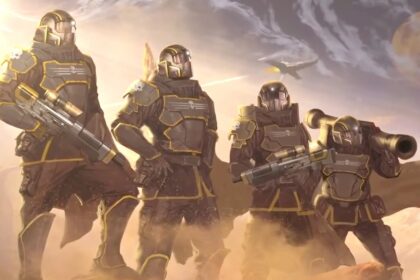Neverwinter Nights 2: Enhanced Edition, Enhanced in name, Hollow in execution.
Neverwinter Nights 2: Enhanced Edition is a remaster of the original 2006 Dungeons & Dragons-based RPG, brought back to life by Aspyr Media. Founded in 1996, Aspyr carved its niche by porting games for macOS, only stepping into the publishing spotlight around 2005. Since then, they’ve handled projects like Civilization VI and Tomb Raider I–III Remastered, a mixed resume of solid strategy ports and nostalgia-driven re-releases.
With that in mind, expectations for this remaster were cautious at best. NWN2 has always been a game rich in potential, deep lore, beloved races and classes, and the familiar spine of D&D’s 3.5e ruleset. But instead of revitalising a classic, Aspyr’s return to the Sword Coast feels more like a missed saving throw than a critical hit.
If there’s one element that drags this remaster face-first through the mud, it’s the combat and AI systems. When discussing Dungeons & Dragons adaptations in the video game space, it’s impossible not to draw comparisons to heavy-hitters like the Baldur’s Gate franchise or even MMOs like Neverwinter and Dungeons & Dragons Online. While those MMOs lean into real-time combat, they manage to make it work by streamlining responsiveness and trimming away the clunk. They understand their medium and adapt the D&D spirit accordingly.

Neverwinter Nights 2: Enhanced Edition doesn’t show the same adaptability. While most traditional TTRPGs embrace turn-based systems to mirror tabletop strategy and deliberate pacing, this remaster clings to real-time-with-pause mechanics like a relic from the past. Instead of enhancing that system to meet modern expectations, it doubles down on awkwardness. The result is combat that’s less tactical and more tiresome, especially when dice-roll mechanics—which do make sense in a D&D context—clash with chaotic, unresponsive gameplay.
What’s worse, this could’ve been a golden opportunity to embrace the old-school charm: retro visuals, the original UI styling, and all the quirks that fans remember fondly. Instead, it feels like the developers slapped on a fresh coat of paint and called it a day, letting core mechanical issues fester under the surface. “Enhanced” in name, but not in experience.
Then there’s the learning curve, or more accurately, the brick wall. Unless a player is already familiar with the intricacies of the 3.5e D&D ruleset, they’re met with a flood of stats, feats, and systems hurled at them with the subtlety of a tavern brawl. There is a tutorial, technically, but it’s far from comprehensive, and anyone entering this world for the first time is likely to drown before they’ve even drawn their first sword.

Moving away from combat, let’s talk about the camera system. Being a remaster of a game originally released in 2006, it’s no surprise that much of Neverwinter Nights 2: Enhanced Edition leans heavily on keyboard shortcuts. That isn’t inherently a problem, until those shortcuts start feeling like they belong in a real-time strategy game instead of a tactical role-playing one. Camera control, in particular, feels like an afterthought. There are three camera modes you can switch between. Yes, you can pan the view by dragging your mouse to the screen’s edge, but that’s a clunky and outdated solution for a game that’s not a Real-time strategy or turn-based tactic that quickly grows tiresome.
Neverwinter Nights 2: Enhanced Edition offers three distinct modes for camera presets: Character, Exploration, and Strategy, but two of them function almost identically, moving the view to just behind the player for a third-person angle that’s perfectly fine in theory, but clumsy in execution. Strategy Mode gives a top-down view better suited to tactical play, but switching between perspectives feels more like adapting to dysfunction than choosing a playstyle.
Neverwinter Nights 2: Enhanced Edition is mostly voiced, which, on paper, is a strong point. In execution, however? The voice acting lands exactly where you’d expect from a 2006-era RPG: Serviceable, occasionally charming but rarely memorable. It carries some nostalgic weight, but never quite elevates the experience beyond the era it belongs to.
Of course, this extends to some of the character creation. Tieflings, known as being infernal born, usually depicted with tails and horns, lack the tail in the character creation. It might’ve been a technical limitation in the original release, but in 2025? That excuse doesn’t hold much water.

Visually, the textures have been upscaled, but the results are uneven. There is a noticeable and jarring gap in quality between companion models and the random NPCs you come across. The improved lighting and slightly sharper details give it a superficial sheen, but the overall presentation feels rough. It honors neither the old nor the new. The mechanical flaws beneath the surface make it hard to justify the visual effort.
This feels less like a thoughtful nostalgia restoration and more like a lazy cash grab. Much of what made the original playable long-term came from the modding community. It’s already clear that the same community may be the only thing that can make this so-called “enhanced” release a success. The groundwork is in place, but the developers didn’t bother to build upon it.
When it comes to the sound design, the overall audio isn’t terrible. However, the sound design leaves much to be desired. Background effects, especially crowds, are often far too loud, overwhelming dialogue, music and combat sounds unless the effects volume is manually adjusted.
Unfortunately, doing so also dampens critical audio cues such as footsteps, sword clashes, and spellcasting. It’s a lose-lose situation. A proper remaster should have rebalanced these layers, making the soundscapes dynamic and distance-aware. Instead, it feels like everything is competing for your ears, with no spatial awareness or polish. Something as simple as crowds fading in and out based on proximity could have added to the immersion. Instead, it just adds noise.

Overall, Neverwinter Nights 2: Enhanced Edition could have been a love letter to fans of the original; a chance to refine, rebalance and reintroduce a classic RPG to a new generation. Instead, it feels like a quick polish job, barely skimming the surface of what actually needed fixing.
Combat remains clunky, camera controls are archaic and not in a good or nostalgic way, and the sound design often distracts more than it immerses. The visual upgrades are inconsistent at best, and core mechanics, many of which were improved by mods long ago, remain untouched.
It’s hard not to view this remaster as yet another effort nostalgia grab, the kind of release that banks on fond memories while quietly ignoring the flaws that made the original a challenge to love. Aspyr has released something that looks passable in screenshots but collapses the moment you start playing with intent. And with a game as mechanically dense as NWN2, Intent matters.
For die-hard fans, modding might still offer salvation, but for everyone else, this “Enhanced Edition” is a reminder that not all classics age well, and not every remaster deserves a second roll.















